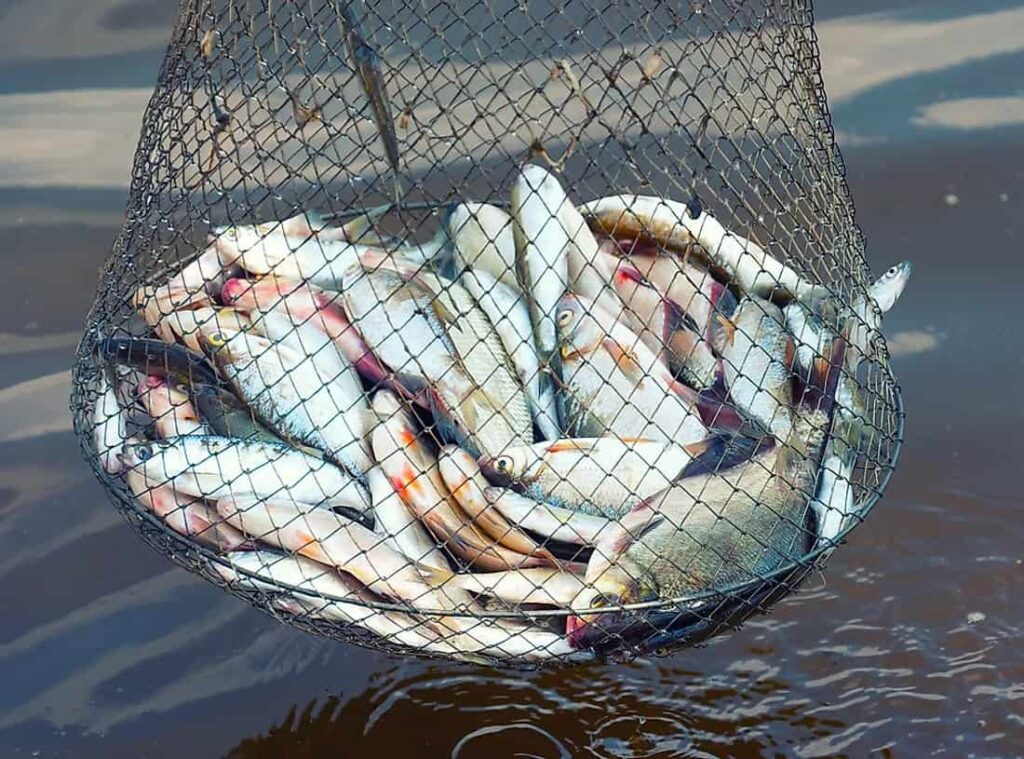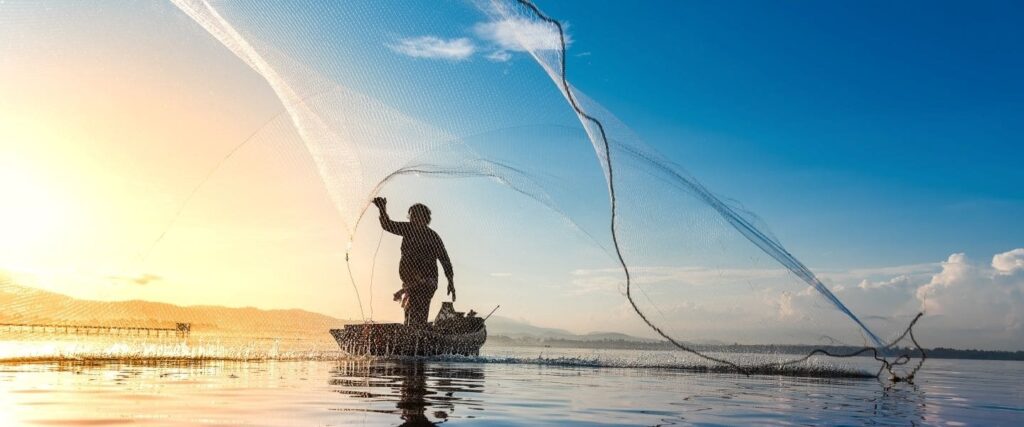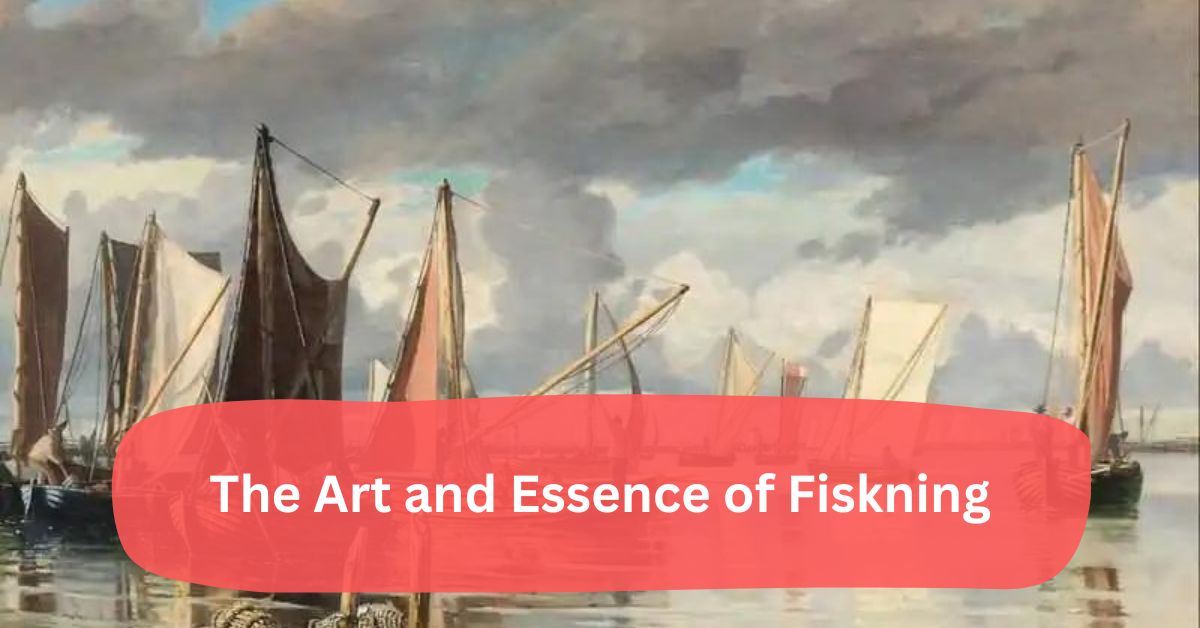Fishing, or “fiskning” as some might call it, is more than just a hobby. It’s a way of life for many and an activity that spans across cultures and generations. So, what exactly is fiskning? At its core, fiskning is the act of catching fish from bodies of water.
But beyond that simple definition, it’s an engaging activity that brings people closer to nature, offers relaxation, and provides a sense of accomplishment. Whether it’s for recreation or sustenance, fiskning has a universal appeal that’s hard to resist.
The History of Fiskning:

Fiskning isn’t a new pastime; it’s an ancient practice that dates back thousands of years. Early humans relied on fiskning as a primary food source, utilizing rudimentary tools and techniques.
From simple spears and nets to more sophisticated methods like line fiskning, the evolution of fiskning techniques has been remarkable.
Over the centuries, fiskning has evolved from a survival skill to a recreational sport, with each era contributing new tools and methods to the practice.
The Different Types of Fiskning:
There are several types of fiskning, each with its own unique techniques and equipment. Some of the most popular forms of fiskning include:
1. Fly Fiskning:
Fly fiskning involves using a lightweight lure called a fly to catch fish. The fly is cast using a specialized rod, reel, and line. This type of fiskning is often practiced in rivers and streams and is known for its graceful casting technique.
2. Ice Fiskning:
Ice fiskning is practiced on frozen bodies of water. Anglers drill holes in the ice and use specialized equipment to catch fish through these openings. Ice fiskning is particularly popular in colder regions where lakes and rivers freeze over in the winter.
3. Deep-Sea Fiskning:
Deep-sea fiskning takes place in the open ocean, often far from the shore. This type of fiskning requires sturdy equipment and boats designed to handle the challenging conditions of the sea. Anglers target large species such as marlin, tuna, and swordfish.
4. Freshwater Fiskning:
Freshwater fiskning is done in lakes, rivers, and streams. It is the most common type of fiskning and can be enjoyed using a variety of techniques, from simple rod and reel setups to more advanced methods like trolling and jigging.
The Benefits of Fiskning:
Fiskning offers numerous benefits beyond just the catch. Here are some reasons why fiskning is such a beloved activity:
1. Connection to Nature:
Fiskning allows individuals to immerse themselves in the natural world. Whether standing on a riverbank or sitting in a boat on a lake, the experience of being outdoors and observing wildlife is a significant part of fiskning’s appeal.
2. Stress Relief:
The tranquility of the water and the rhythmic motion of casting and reeling can be incredibly calming. Many anglers find fiskning to be a perfect way to unwind and escape the stresses of daily life.
3. Physical Exercise:
Fiskning can provide a good workout, especially types like fly fiskning or deep-sea fiskning, which require physical effort and endurance. Walking along riverbanks, paddling a boat, and reeling in fish all contribute to physical fitness.
4. Social Bonding:
Fiskning is often enjoyed with friends and family, making it an excellent activity for social bonding. Sharing the experience of fiskning can strengthen relationships and create lasting memories.
5. Sense of Accomplishment:
Catching a fish, no matter the size, gives a sense of achievement. The patience and skill required in fiskning make each catch rewarding and satisfying.
Modern Fiskning Techniques and Equipment:
The world of fiskning has seen significant advancements in technology and equipment. Modern anglers have access to high-quality rods, reels, lines, and a variety of lures designed to mimic natural prey. Additionally, electronic fish finders and GPS systems have made locating fish more efficient.
1. Rods and Reels:
Today’s rods and reels are made from lightweight, durable materials like carbon fiber and graphite. They offer precision and control, making fiskning more accessible to everyone from beginners to seasoned pros.
2. Lures and Baits:
Lures and baits have evolved to become highly specialized. Anglers can choose from a wide range of options, including soft plastics, crankbaits, spinnerbaits, and live bait, each designed to attract specific types of fish.
3. Electronic Aids:
Technology has revolutionized fiskning with tools like fish finders, which use sonar to detect fish below the water’s surface. GPS devices help anglers navigate to the best fishing spots and track their locations with ease.
Environmental Impact and Conservation Efforts:

Fishing, while enjoyable, also comes with responsibilities towards the environment. Overfishing and habitat destruction can severely impact fish populations and their ecosystems.
Conservation efforts, such as catch-and-release practices and habitat restoration projects, are crucial in ensuring sustainable fishing practices. Many anglers advocate for responsible fishing practices to preserve fish stocks for future generations.
Cultural Significance of Fishing:
Fishing holds deep cultural significance in many societies around the world. It has been a source of livelihood, food security, and cultural identity for countless communities.
Traditional fishing techniques and rituals are often passed down through generations, contributing to the preservation of cultural heritage. Festivals and celebrations centered around fishing highlight its importance in local traditions and folklore.
Economic Impact of Fishing Industry:
The fishing industry plays a vital role in global economies, providing employment for millions of people worldwide. Commercial fishing operations contribute to food production and supply chains, supporting industries such as processing, shipping, and retail.
Recreational fishing also boosts local economies through tourism and the sale of fishing gear, licenses, and accommodations.
Challenges and Innovations in Fishing Technology:
As fishing practices evolve, so do the challenges and innovations in fishing technology. Sustainable fishing practices are increasingly prioritized to reduce bycatch and environmental impact.
Innovations in gear design, such as eco-friendly materials and biodegradable fishing lines, aim to minimize waste. Technological advancements continue to improve efficiency and safety for both commercial and recreational fishermen, ensuring the longevity of the fishing industry.
These aspects highlight the multifaceted nature of fishing beyond its recreational aspect, encompassing environmental, cultural, economic, and technological dimensions. Whether enjoyed for sport, livelihood, or tradition, fishing remains an integral part of human interaction with aquatic ecosystems and natural resources.
Conservation Challenges and Initiatives:
Conservation challenges in fishing include habitat degradation, pollution, and the impact of climate change on marine and freshwater ecosystems.
Loss of habitat due to coastal development and pollution from industrial runoff can disrupt fish populations and their breeding grounds.
Climate change effects, such as ocean acidification and rising water temperatures, pose additional threats to fish habitats and biodiversity.
Conservation initiatives aim to address these challenges through habitat restoration, sustainable management practices, and international agreements to protect endangered species and marine reserves.
Fishing Regulations and Governance:

Fishing regulations play a crucial role in managing fish populations and ensuring sustainable fishing practices. Government agencies and international bodies set quotas, size limits, and fishing seasons to prevent overfishing and maintain healthy ecosystems.
Monitoring and enforcement of regulations are essential to prevent illegal fishing activities and promote compliance with conservation measures.
Collaborative efforts between governments, scientists, and stakeholders are necessary to develop effective policies that balance economic interests with environmental sustainability.
Social and Recreational Aspects of Fishing:
Fishing has significant social and recreational aspects that contribute to its popularity worldwide. Anglers often form communities and clubs centered around their shared passion for fishing.
Fishing tournaments and competitions showcase skill and sportsmanship among participants. Recreational fishing provides opportunities for relaxation and bonding with family and friends in natural settings.
Additionally, fishing can be therapeutic, offering stress relief and mental health benefits through the calming effects of being near water and engaging in a focused activity.
Conclusion:
Fiskning is a timeless activity that continues to captivate people around the world. Whether you’re a seasoned angler or a novice looking to try something new, fiskning offers a wealth of experiences and benefits. From its rich history to the various types and techniques, fiskning is a pursuit that combines relaxation, skill, and a deep connection to nature. So, grab your gear, head to the water, and discover the joys of fiskning for yourself.
